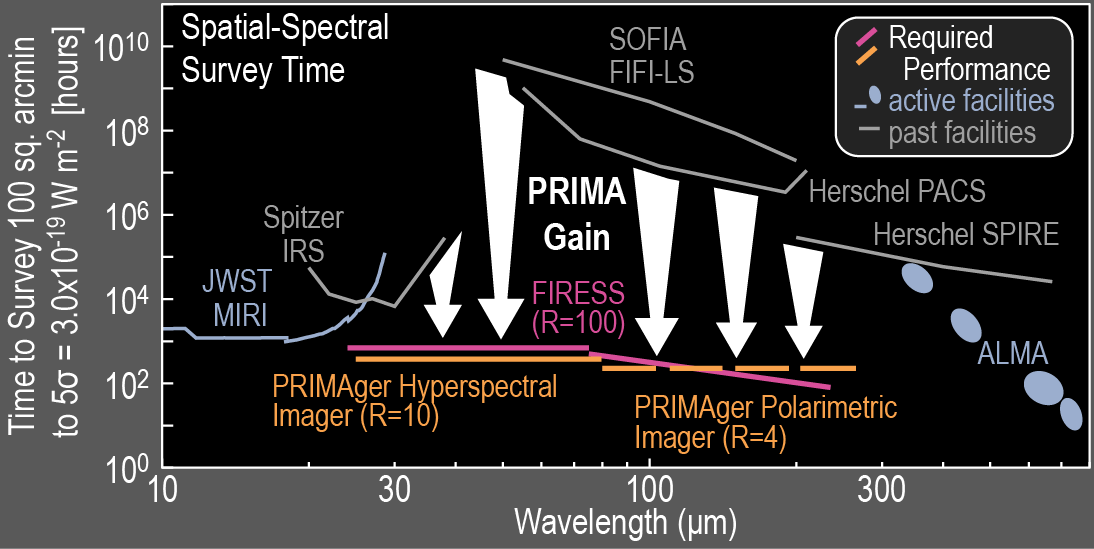PRIMA
NASA selected two proposals for missions to observe X-ray and far-infrared wavelengths from space for additional review. Each proposal team will conduct a 12-month mission concept study. After detailed evaluation of those studies, NASA expects to select one concept in 2026 to proceed with construction, for a launch in 2032.
Probe far-Infrared Mission for Astrophysics (PRIMA)
- PRIMA is a 1.8-meter telescope studying far-infrared wavelengths, helping bridge the gap between existing infrared observatories, such as NASA’s James Webb Space Telescope, and radio telescopes. By studying radiant energy that only emerges in the far-infrared, the mission would address questions about the origins and growth of planets, supermassive black holes, stars, and cosmic dust.
- Principal investigator: Jason Glenn, NASA Goddard
- Project management: NASA’s Jet Propulsion Laboratory in Southern California
- Contributions in Europe from France, Netherlands, Germany, Italy, and possibly other countries
- The expected performances of PRIMA allows a gain in mapping speed by a factor of almost 106, which is approximately the same contrast when we observe the sky during night and day.
- PRIMA will feature polarimetric capabilities with PRIMAger PPI mode from about 80 to 260 micrometers.
PRIMA fact-sheet is available for download.

|



